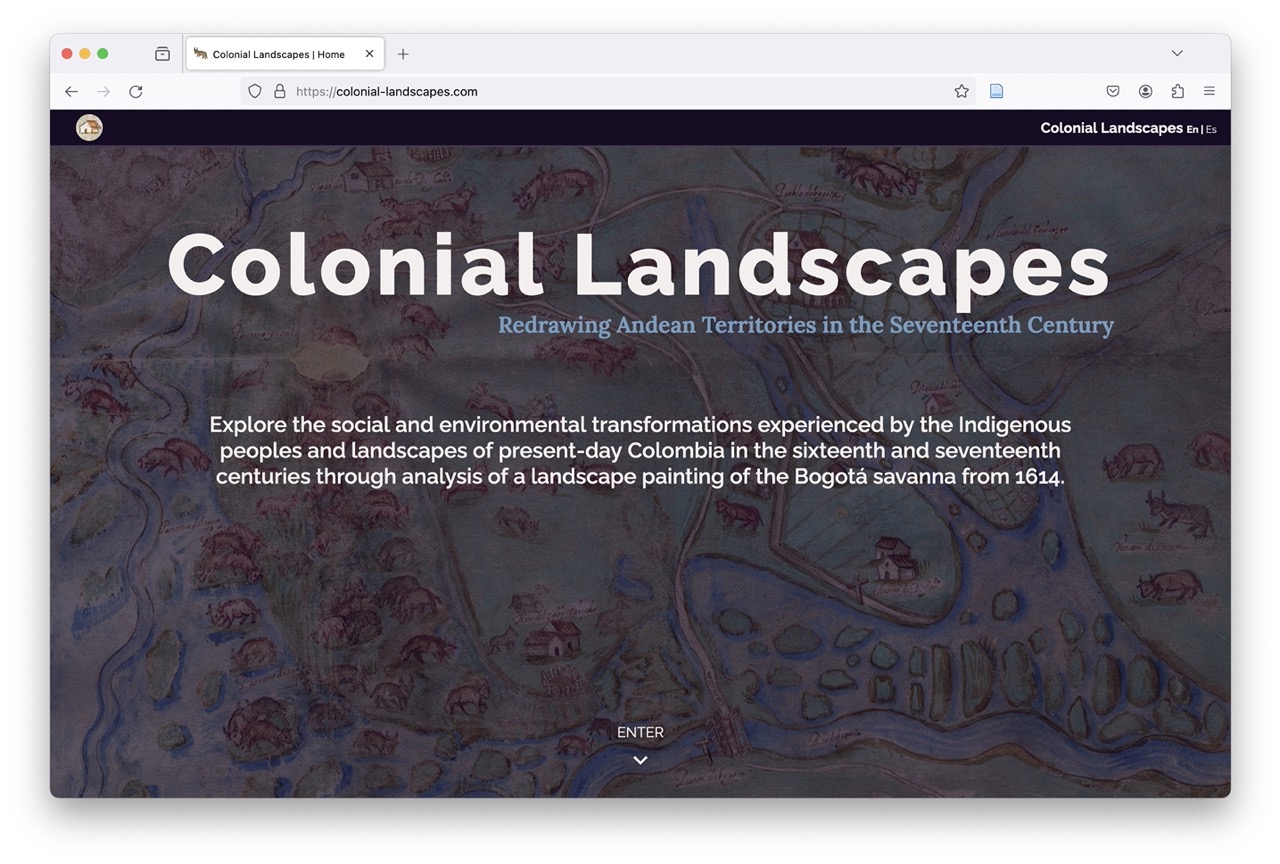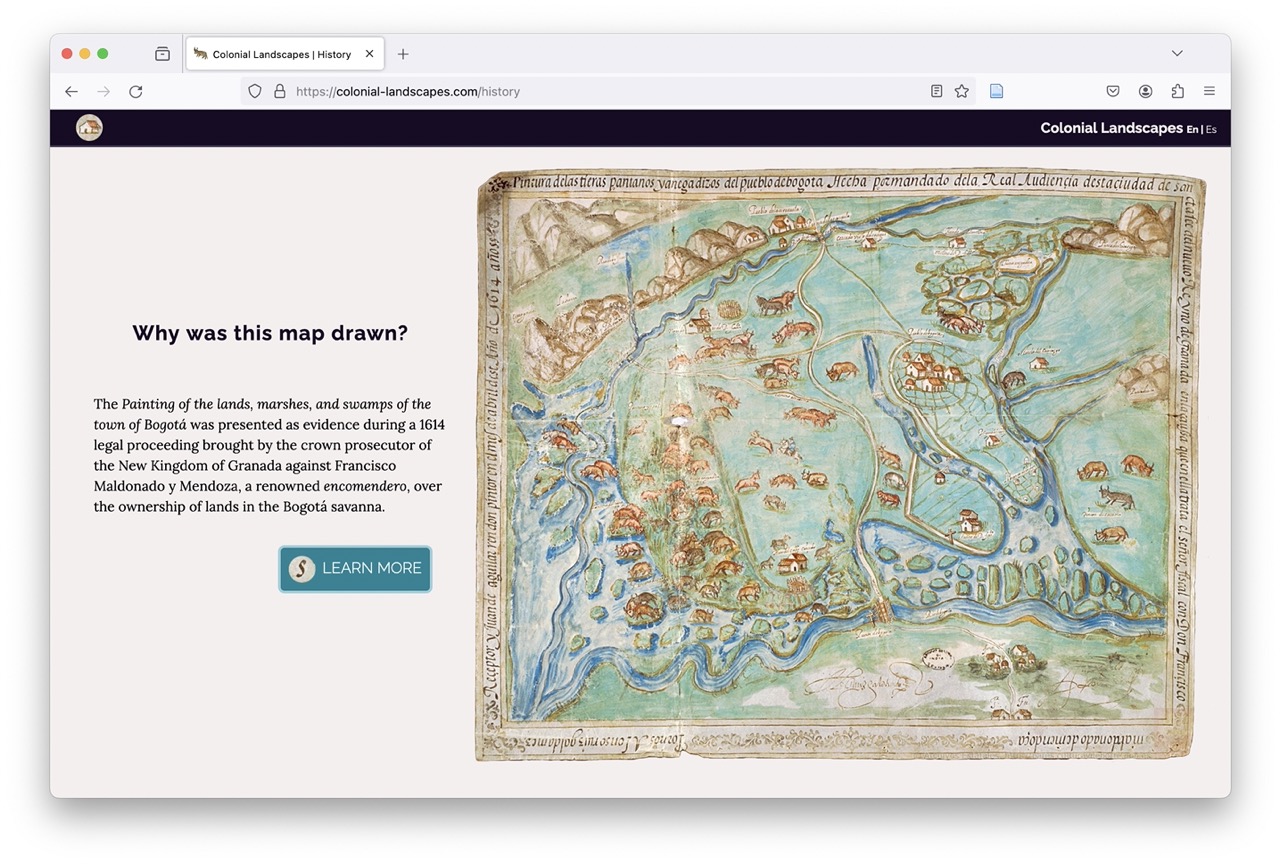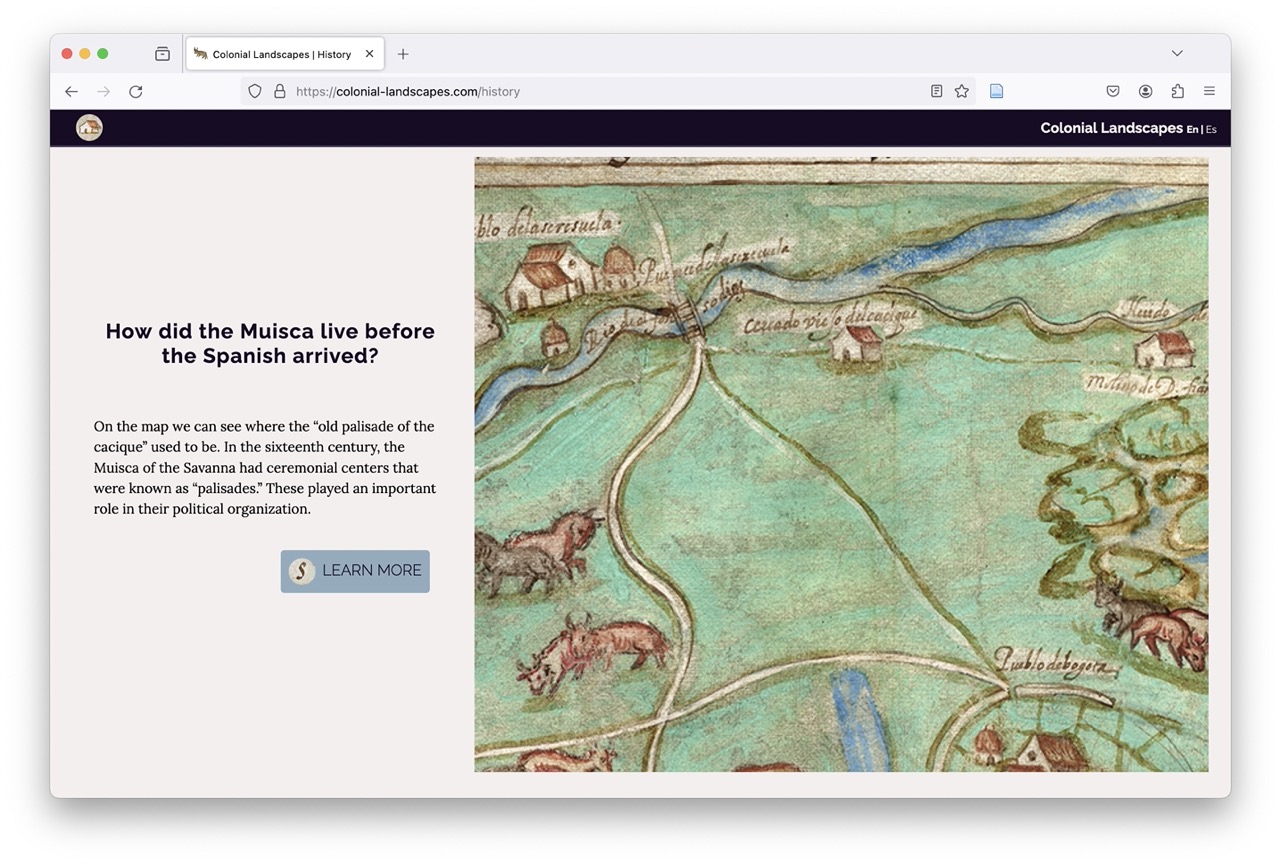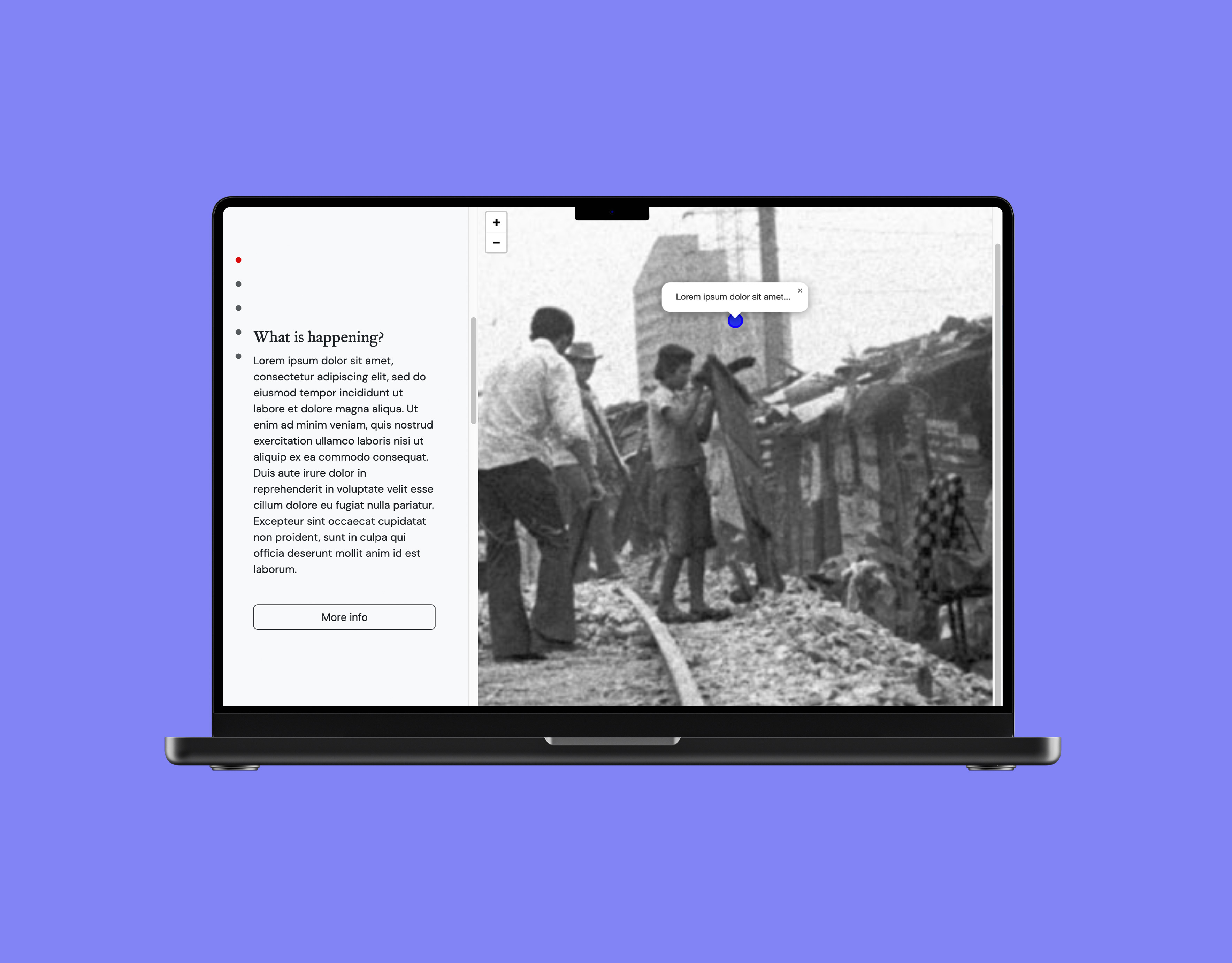In 2020, Santiago Muñoz (PI) developed Colonial Landscapes (Paisajes coloniales), an interactive, bilingual pedagogical platform that explores the history of the region around Bogotá in the highlands of what is now Colombia through a 1614 map. The platform is intended for a non-academic audience, particularly of Colombian middle, high school, and undergraduate students, as an innovative way of exploring the changes undergone by the Indigenous Muisca peoples who inhabited this region, and the landscape itself, as a result of European colonization. In four short chapters, the platform guides readers through the map, highlighting relevant sections, and using specific details in the image as launching points for explanation and analysis.
The tone is accessible and readers are invited, through a thoughtful user interface — designed and built by Adelaida Ávila — to explore and dig deeper by opening panels with additional information, definitions of key concepts, additional sources and suggestions for further reading. Users are also free to explore the map independently of this narrative, while scholars can also easily access digitized sources and relevant information for teaching and research (see the screenshots below).




The website is built as a simple, serverless, static website, which has ensured it has remained accessible, robust, and — significantly — continues to be hosted at no cost on GitHub pages.
We are now drawing on this experience by turning the code base, design language, narrative form, and pedagogical structure of Colonial landscapes into a replicable open-source framework that will allow others to generate their own public-facing digital narratives on the basis of digitized or born-digital objects, whether 2D scans like the 1614 map at the heart of Colonial landscapes or 3D models of ancient and historic artifacts.
In order to develop, test, and assess the prototype, we are develop two collaborative public-facing projects with UCSB students that use different kinds of sources.

